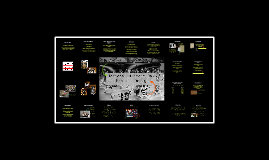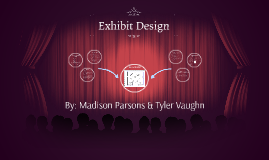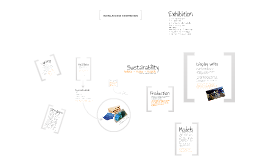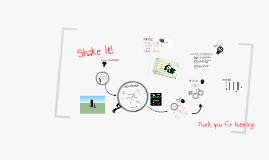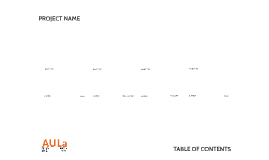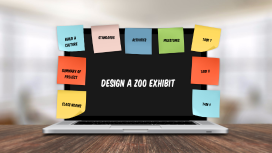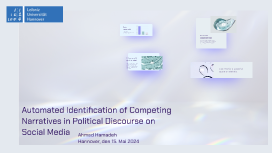Exhibit Design
Transcript: INSTALLATION OF AN EXHIBITION Sustainability Both natural and artificial light contain infrared radiation which generates heat. This is potentially harmful to delicate objects and needs to be kept to a minimum. experimenting with new materials new construction techniques alternative uses for traditional materials laser cutting The height of cases and objects needs to be suitable for all visitors, whilst still creating interesting and beautiful displays. The use of platforms and acrylic boxes to create different levels within a case is useful as are a host of invisible fixings used to safely secure precious or delicate objects. Display units Exhibition MDF plywood plasterboard different foamboards It is common for the main construction to take place in sections in the contractor’s workshop. Glass cabinets are so important, particularly in museum environments. When objects are delicate in terms of conservation, they will require the security and protection of a display case in order to control access, humidity, lighting and temperature as necessary. What colours and types of surface will most appropriately support the objects? Bright colours that detract from the display are best avoided, although the contrast of neutral tones between object and background can help objects stand out. These three types of lighting, used together, build up layers of light and colour. Trade exhibitors often use brightly lit stands to compete with their neighbours. This generates so much heat, that exhibition halls sometimes need ventilation. Most lighting schemes will use a combination of ‘ambient light’, which describes the general illumination, ‘accent lighting’, which dramatically lights one element to create highlights, and ‘sparkle’ which involves special lighting effects to create a spectacle. They help to illustrate an overall understanding of spatial relationships, acting as three-dimensional maps that help us to navigate our way through a narrative. Models of reconstructions help us to imagine sites that no longer exist. A model illustrating the layout of a Roman fort, for example, enables us to see how the fort was laid out, helping us to gain a better understanding of how people lived and worked there. Often models ‘in the white’ help to emphasise a particular part of a story without the distraction of colour. The use of materials in museums often will deal with conservation requirements Models MATERIALS More used materials: Production The use of glass cases in museums requires careful management of lighting to avoid glare and multiple reflections, which are particularly troublesome for partially sighted visitors It´s important to have into mind standard sizes of flat materials. Exhibitions in historic buildings Services ‘Drops’ or suspensions points enable structures, banners and lighting rigs to be hung from the ceiling of the hall. Most exhibition halls have a solid concrete floor, with service channels at regular intervals. A 100mm (4in) softwood plinth enables water pipes or electrical cabling to be brought up from the floor, although occasionally electricity is brought in from overhead. Floor coverings are usually the first component of the stand to be put in place, and are covered and secured with a thick plastic sheet for protection. Lighting The designer needs to be aware of existing conservation rules and regulations, designed to protect the fabric of the existing site. There will be strict guidelines about attaching exhibition structure to walls and floors, and there may also be conservation implications in terms of heating, humidity and light. It is not unusual to have to design free-standing exhibitions that do not connect in any way with the building. Heritage conservation The complexity and choice of materials, for example curved walls and extra levels, will impact on the construction costs and may have access implications. These materials are used to build a carcass to which all the others elements will be attached. Finally they are all finished as specified. reduce + reuse + recycle One of the main considerations for the exhibition designer, whether working commercially or culturally, is how the objects or products will be displayed. This is an important part of exhibition design: for many visitors, the items on display are the main reason for attending the exhibition. legal and ethical requirement In order to protect vulnerable collections, all materials and glues need to be labtested in advance of use. Colour choices in historical environments are more successful when they respect the historical development of colour, and its evocation of specific periods. On occasion, models may be working mechanisms, or automata used to illustrate a process or physical principle.






